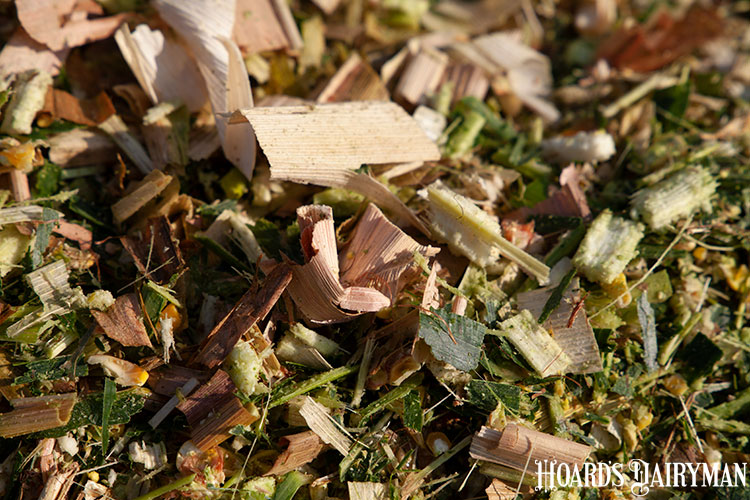
While corn silage harvest is just around the corner, this feedstuff benefits from some time in storage prior to being fed. If several months of ensiling is not an option for your farm, Luiz Ferraretto offered advice on how to utilize greenchop corn silage in a recent Iowa State University Extension Dairy News and Views podcast.
“One of the benefits of corn silage ensiling is that starch digestibility will increase with fermentation,” explained the assistant professor and extension specialist with the University of Wisconsin-Madison. “I would consider at least ensiling for a short period, at least 14 to 21 days. This initial period of fermentation really boosts starch digestibility and is very, very helpful,” he added.
If the feed is needed immediately and ensiling is not possible, Ferraretto said to discuss the situation with your nutritionist. This feed will likely be lower in starch digestibility and the ration will need to be adjusted accordingly. He also said to be aware that milk production will likely drop when feeding this silage due to the reduced starch digestibility.
If a crop was drought stressed throughout the growing season, Ferraretto noted that high nitrate levels can also cause toxicity issues for animals. This is especially true if a crop was harvested right after a rain event when plants can take up a little extra nitrate from soil.
“If you feed greenchop corn this year, and you had drought stress throughout the growing season, test for nitrate,” he advised.
Nitrates accumulate primarily in the bottom portion of the plant, so Ferraretto said high chopping corn silage is one way to avoid these nitrate problems. Another option is to gradually incorporate the new crop corn silage into the diet so that the animals’ rumens have time to adapt to it. Fermentation is also beneficial, as ensiling helps reduce the level of nitrates in feed.
Ferraretto said that each dairy producer will have to make the best decision for their farm, but he reminded that today’s choices will influence the ration for months to come.
“Decisions made this time of the year can have implications all year round,” he emphasized.








